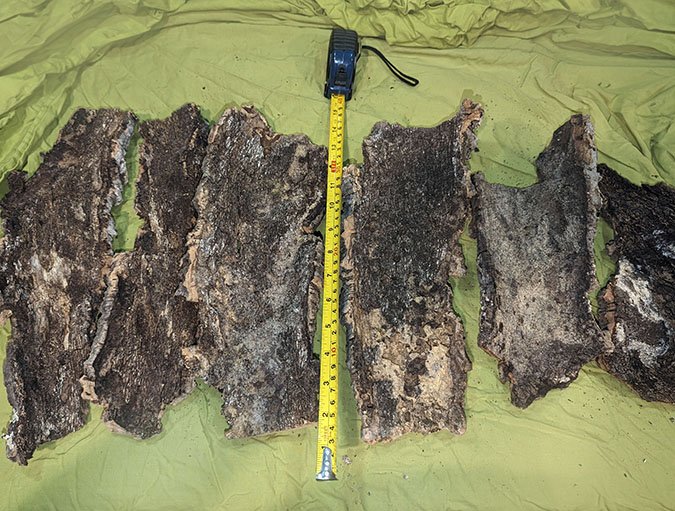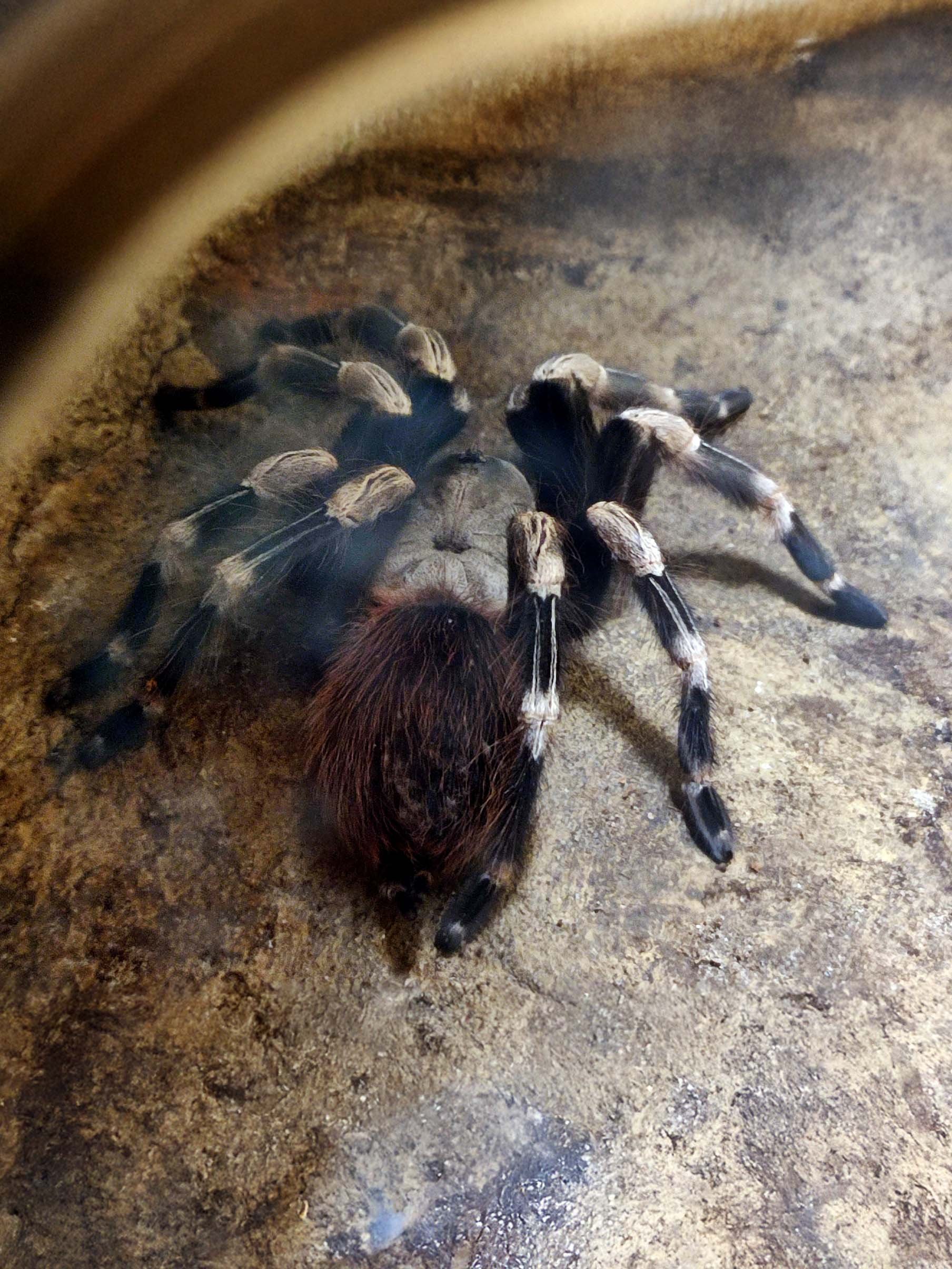Tliltocatl verdezi
Tliltocatl verdezi, or "Mexican Rose Grey Tarantula", is a medium-sized, terrestrial New World tarantula native to Mexico, known for its calm temperament, dusty rose-grey coloration, and reliable hardiness. Once classified under the Brachypelma genus, this species is now part of Tliltocatl, which includes some of the most beginner-friendly tarantulas in the hobby.
Its overall appearance is subtle yet elegant, featuring a dusky brown to grey carapace, faint rosy undertones, and slightly reddish setae (hairs) on its abdomen and legs. Its demeanor is typically docile and slow-moving, making it suitable for handling (with care), educational use, or display setups.
As a terrestrial burrower, the Mexican Rose Grey is not a heavy webber but will often dig shallow retreats or use available hides when kept on suitable substrate.
Tliltocatl verdezi, or "Mexican Rose Grey Tarantula", is a medium-sized, terrestrial New World tarantula native to Mexico, known for its calm temperament, dusty rose-grey coloration, and reliable hardiness. Once classified under the Brachypelma genus, this species is now part of Tliltocatl, which includes some of the most beginner-friendly tarantulas in the hobby.
Its overall appearance is subtle yet elegant, featuring a dusky brown to grey carapace, faint rosy undertones, and slightly reddish setae (hairs) on its abdomen and legs. Its demeanor is typically docile and slow-moving, making it suitable for handling (with care), educational use, or display setups.
As a terrestrial burrower, the Mexican Rose Grey is not a heavy webber but will often dig shallow retreats or use available hides when kept on suitable substrate.


Tliltocatl verdezi, or "Mexican Rose Grey Tarantula", is a medium-sized, terrestrial New World tarantula native to Mexico, known for its calm temperament, dusty rose-grey coloration, and reliable hardiness. Once classified under the Brachypelma genus, this species is now part of Tliltocatl, which includes some of the most beginner-friendly tarantulas in the hobby.
Its overall appearance is subtle yet elegant, featuring a dusky brown to grey carapace, faint rosy undertones, and slightly reddish setae (hairs) on its abdomen and legs. Its demeanor is typically docile and slow-moving, making it suitable for handling (with care), educational use, or display setups.
As a terrestrial burrower, the Mexican Rose Grey is not a heavy webber but will often dig shallow retreats or use available hides when kept on suitable substrate.
What's the ideal diet for a Mexican Rose Grey Tarantula?
All Tarantulas can eat a variety of feeders. Stick to crickets, dubia roaches, silkworms, horned worms occasionally, and a superworm or mealworm as the occasional treat!
How should I keep a Mexican Rose Grey Tarantula?
For this particular creature, you can start with the Terrestrial Terrain small enclosure if under a ¼" - 1.2" Spiderling (sling). When they get to be about 1" in size, you will want to either go to the Terrestrial Terrain Medium, or Terrestrial Terrain Large enclosure. Feed them as slings once a week, twice if their opisthosoma (abdomen) looks small, but if the opisthosoma is wider than their prosoma (pneumothorax) then wait a couple of days to feed. For juveniles or adults, stick to feeding once a week, nothing larger than their opisthosoma. Make sure to keep a water dish at all times full, wider and deeper is preferred.
How long could a Mexican Rose Grey Tarantula live?
Females are believed to live upwards of 25+ years, and males not exceeding around 7 years of age. All estimates are based on multiple sources.















